Kate Forsyth's Blog, page 53
July 23, 2013
SPOTLIGHT: Patrice Kindl on Balancing Family & Career for 19th century women'
[image error]
(You can read my review here)
Patrice kindly agreed to write a blog post about a matter close to both of our hearts - the difficulty of life for women in the 19th century, and how narrow their choices were (something that concerned me very much during the writing of my novel, THE WILD GIRL).
Here it Patrice talking about HAVING IT ALL: Balancing Family and Career for the 19th Century Woman
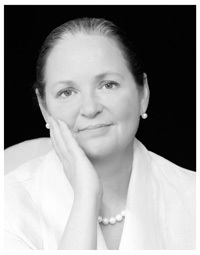
The last two novels I have written (KEEPING THE CASTLE, 2012, and A SCHOOL FOR BRIDES, 2015) have been concerned with the lives of young women in the 19th Century. In the first I have a character, Miss Vincy, who is a serious and talented artist, and in the second I have a dedicated scientist, Miss Franklin. The books are comic romances, yet I have declined to marry either of these women off. The lack of effective birth control, coupled with societal attitudes towards woman’s role, seemed to me to ensure that marriage would be fatal to a career.
I decided to try a reality check, looking at the lives of actual artists, scientists and mathematicians of the 19th Century. I read short biographies of a dozen women who achieved some level of recognition in their own time, paying special attention to whether they were married and had children, and also what the family attitude was toward their work.
And, hmm. True, there were Victorian fathers who shook their fists and stamped their little feet in rage over their daughters’ choices. There were mothers who regarded their daughters as unpaid domestic labor and resented the loss of their services. One family stripped their daughter of clothing, light and fire so she would be unable to work through the night, finding her nevertheless persevering with the ink in her inkwell frozen solid. But a surprising number were encouraged by their families, or at least by one parent, a brother or an uncle.
Marriage was also common. Seven of the twelve were married and five were not. In some cases, however, the marriage definitely was not helpful to their careers. Marie Bracquemond’s husband, also an artist, was bitterly resentful of her work and attempted to hide it from others. Apparently he did not approve of her working in the new impressionistic style. Another quite famous painter, Mary Moser, simply retired after her wedding. Sofia Kovalevskaya, a mathematician and astronomer, contracted a fake marriage in order achieve the freedoms available only to married women.
This latter case illuminates one good reason for marriage. A woman married to a cooperative husband (she generally needed his permission) could in some countries attend university classes and lectures, travel and mingle more freely with male colleagues. Marriage could (though it did not always) contribute to financial stability.
One thing the twelve had in common was the fact that they had relatively few children. Mary Somerville, astronomer and biologist, had the most (six), but only one survived to adulthood and most died very young. Augusta Ada Byron, Countess of Lovelace, known today as the first computer programmer, had three. Three other women had one; the rest had none. Those who did have children either also came from wealthy families with plenty of domestic help or else handed the child over to a relative to rear.
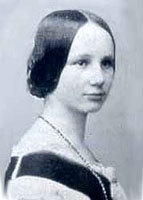
It is sobering to reflect that we have no idea how many brilliant women were silenced by the simple expedient of yearly pregnancies. Of course, many other factors have served to silence women, and men as well, all throughout history. Poverty, lack of encouragement or opportunity, the simple need to keep food on the table and a roof over one’s head, all have deprived us of an unknown number of inventions, ideas and insights from both sexes. However, the fact that women are the child-bearing and child-rearing sex creates an extra hurdle to surmount when aiming for a life of the mind.
While I am aware of some women who manage to combine large families with high achievement, it is noteworthy that none of the women I looked at had one. It is also not particularly surprising to find that nearly all came from either wealthy or middleclass families.
I’d like to conclude with a remarkable exception to that rule: Miss Mary Anning, one of ten children born to an impoverished English family in 1799. She began as a barely literate child assisting her father to gather fossils to sell to tourists and ended by training herself to become one of the most accomplished and knowledgeable paleontologists in the world. Although few of the many specimens she uncovered, reconstructed and analyzed were named after her (scientifically inclined gentlemen purchased her work and presented it to museums under their own names), her expertise was universally recognized and revered in geological circles.
She did not marry, and had no children. In precarious financial circumstances all her life, she could have expected no assistance in rearing offspring. Her genetic makeup – those indomitable, intellectually questing traits – were never handed down to the future, because as a woman she had to choose between a life of the mind and a life of the body.
PLEASE LEAVE A COMMENT, I LOVE TO KNOW WHAT YOU THINK
July 21, 2013
BOOK REVIEW: Keeping the Castle by Patrice Kindl
[image error]
Title: Keeping the Castle
Author: Patrice Kindl
Publisher: Viking Children's Books
Age Group & Genre: YA historical romance
The Blurb:
Seventeen-year-old Althea is the sole support of her entire family, and she must marry well. But there are few wealthy suitors--or suitors of any kind--in their small Yorkshire town of Lesser Hoo. Then, the young and attractive (and very rich) Lord Boring arrives, and Althea sets her plans in motion. There's only one problem; his friend and business manager Mr. Fredericks keeps getting in the way. And, as it turns out, Fredericks has his own set of plans . . . This witty take on the classic Regency--Patrice Kindl's first novel in a decade--is like literary champagne!
“Take one Austenian heroine in desperate financial straits. Put her in a crumbling castle, give her two evil stepsisters and some very unsuitable suitors. Make it funny! Patrice Kindl’s Keeping the Castle is an absolute charmer!” -- Karen Joy Fowler, author of The Jane Austen Book Club
What I Thought:
I thoroughly enjoyed this light-hearted and utterly charming Regency romance. It has been described as a cross between Jane Austen's Pride and Prejudice and Dodie Smith's I Capture the Castle, two of my all-time favourite books. It's lighter and sweeter than either of these books, and much less serious in intent. The tone is comic, the characters are exaggerated for humorous effect, and the plot is one of mishaps, misunderstandings and muddles.
The heroine Althea Crawley is only seventeen, beautiful, impoverished, and a little too quick to voice her opinions - sometimes with disastrous attempts. She must marry well if her family is to keep their crumbling old castle ... but all Althea's plans to charm rich Lord Boring keep going awry.
Complicating her life are selfish step-sisters, a troublesome younger brother, a naughty puppy, miserable weather, a sweetly ineffectual mother, and the odiously interfering Mr Fredericks ...
Although the book is really a funny and romantic romp, there is just enough of an edge to give it gravitas. Althea is an intelligent and independent-minded young woman who really does chafe against the strictures of her society and her voice rings all too true:
I keep forgetting how ridiculously sensitive and illogical men were. He assumed that his fortune would buy a beauty; I assumed that my beauty would procure me a rich husband. It seemed much the same thing to me, but evidently what was permissible in a man was not in a woman.
Keeping the Castle was written with a teenage audience in mind, and so it is a swift and easy read (I read it in a matter of hours). However, I'd recommend it for adults as much as for teenagers, particulalry if you feel like a little sunshine in your day.
July 18, 2013
WRITING ADVICE: How to build a story out of scraps of ideas
However, writing is also a craft. A writer must learn how to shape and control the artistic impulse, to bring logic and structure to the story, to work with discipline and focus. Inspiration is a flash of light, gone in a second. The only way to harness that electricity, and pin it to the page, is with dogged determination.
I love to teach. I love to help people find their way towards their story. And so - when people write to me, asking for help - I do my best to give it to them.
A few weeks an aspiring writer wrote to me in very real trouble, feeling stuck and unable to move on, and worried that meant she would never be able to make her dreams of writing come true. Its not the first correspondence I've had from this writer - she badly wants someone to help her.

This is a paraphrase of what she asked:
I am wondering whether you can help me.
I love writing fiction, but I'm really struggling to fix on a story. I just keep writing more and more starts, more pieces about characters, which I enjoy - but I can't back them up. I can't follow through. What should I do?
This is what I answered:
You know in your heart exactly what you need to do. You don't need me to tell you. You're just hoping I'll tell you some secret way to make it easy. But there is no secret simple way.
You need to focus. You need to have discipline. You have to rein in your wild and beautiful imagination and learn to tame it. You need to have faith in yourself and your story, and not allow fear to shake you.
Here is what I want you to do.
Spread all your ideas, all your story fragments, all your bibs and bobs, out on the table. See if any of them seem to belong together. Start sorting them into piles.
Pick one pile. Just one. Probably the biggest pile is best, but go with your intuition - which idea, or cluster of ideas, speaks to you the most?
Put all the other ideas away in a folder, and shut them away in a drawer. You may wish to have a number of folders, one for every other pile.
Take the one you have chosen and focus all your attention on it. Begin to see the skeleton of a story in it. Write a rough outline of a plan. Write character outlines. Think about your setting, your time period, your story structure. Set aside an hour or two a day to work on it. Do nothing else in that time.
When you have an idea of the story from beginning to end, with about a dozen key plot points along the way, begin to write. Start at the beginning of your story and write one scene at a time. Set yourself a goal for each week. Two thousand words is easily achievable. Tell yourself no wine or chocolate or mindless TV till you have written your word goal.
Write your story word by word, sentence by sentence, scene by scene. Do whatever you need to do to keep on going.
Whenever you get an idea for another story, write it down - all of it, as much as you can - then put the idea away in a folder and shut it in the drawer. If you find yourself thinking about it, force your mind away from the pretty new thing and MAKE it think about the idea you are working on. Do not allow yourself to be distracted because that way lies chaos and failure.
Go right now and do it! No excuses.
Our job as creative artists is to create order out of chaos. All novels begin with a mess - here is the mess I'm working on right now:
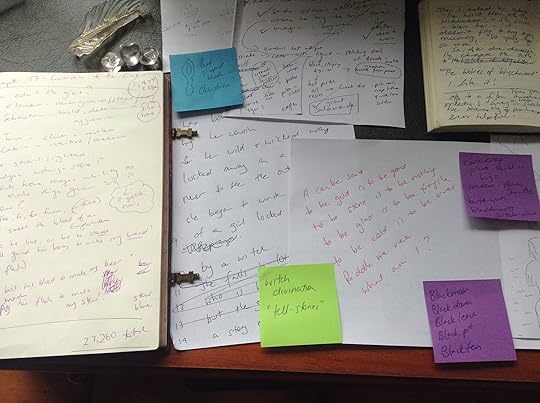
July 16, 2013
BOOK LIST: Books Read in June 2013
June
1. The Duke and I – Julia Quinn
I really enjoyed this frothy historical romance - a lovely way to while away a few peaceful hours in a hot bath with a glass of sparkling wine.

2. The Ashford Affair – Lauren Willlig
I absolutely loved this book which moves between contemporary New York, and 1920s England and Africa. It's a historical mystery, a family drama, and a romance, all stirred together to create a compulsively readable novel. You can read my review here and here's my Interview with Lauren Willig.

3. Keeping the Castle – Patrice Kindl
What a delightful surprise this book was! I'd read a review of it which said it was a cross between Jane Austen's Pride and Prejudice and Dodie Smith's I Capture the Castle (two of my absolute favourite books), and so I thought I'd give it a whirl. I loved it! It's funny, romantic, and has a slight satirical edge. I'm hoping to run a longer review and interview with the author in a few weeks' time - keep an eye out!

4. The Rosie Project – Graeme Simsion
This book was another pleasant surprise. I'd heard it was rather like contemporary chick lit, except told from the point of view of an man with Asperger's, and so I was a little reluctant to read it. I've read The Curious Incident of the Dog in the Night-time and The London Eye Mystery, and enjoyed them both, but was a little jaded with this type of voice after too many episodes of The Big Bang Theory. I'm glad I read it, though. Its a feel-good read, with enough intelligence to lift it out of the usual chick-lit rut, and it'd make a great rom-com movie.
5. A Proud Taste for Scarlet & Miniver – E.L. Koningsburg
The great American children's author E.L. Koningsburg sadly died in mid-April, and I remembered her books fondly from childhood. I had never read A Proud Taste for Scarlet & Miniver and so ordered it in. It's an unusual book, quite unlike her others which are really about everyday kids. This one is a fictive biography of Queen Eleanor of Acquitaine, one of my historical heroines. Its brilliantly well done, bringing Queen Eleanor and her times vividly to life.
6. A Monster Calls – Patrick Ness
I had been wanting to read A Monster Calls for quite some time, and seeing Patrick Ness speak at the Sydney Writers Festival in May gave me the impetus I needed to buy the book. What can I say? It's brilliant, surprising, harrowing, humbling. I found it hard to breathe after I finished reading it, and my dreams that night were restless and disturbed. A month later, I am still thinking about it. The book packs a hefty emotional wallop and deserves all the prizes it won.
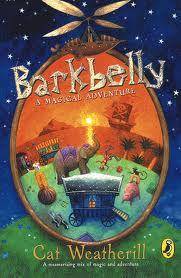
7. Barkbelly – Cat Weatherill
A wonderfully written, rambunctious adventure fantasy for children, Barkbelly also carries important messages about the importance of tolerance and compassion. I loved Cat Weatherill's earlier book Wild Magic which retells the Pied Piper of Hamelin fairy tale (you can read about it here), and so I was really glad to read her newest venture.
8. Dark Road to Darjeeling – Deanna Raybourn
9. Dark Enquiry - – Deanna Raybourn
10. Silent Night – Deanna Raybourn
In April, I re-read The Lady Julia Grey series of historical murder mysteries by Deanna Raybourn and enjoyed them thoroughly (you can read my review of the first three books here). I settled in to read the last 2 books in the series (plus one Xmas novella) this month, and enjoyed them just as much. The characters are always sharply drawn, the mystery is always intriguing (and not always easy to guess), and the ongoing romance between Lady Julia and her enigmatic new husband is a large part of the pleasure. Well worth a read.
11. Me Before You – Jojo Moyes
I read The Girl You Left Behind by Jojo Moyes earlier this year and absolutely loved it, and so I thought I'd read some of her other books (you can read my review here). I did enjoy Me Before You, though not nearly as much as The Girl You Left Behind. Its a very readable book, with an unusual premise, and the two main characters do feel quite real. The contemporary setting and voice made it read like chick-lit, yet the tone is one of pathos, not humour. I was moved by the story, but did not cry buckets as had been predicted. Which is not like me (I'm an unashamed crier!) Perhaps because I knew what to expect ... anyway, an enjoyable read, and one that should be read with some tissues to hand, just in case ...
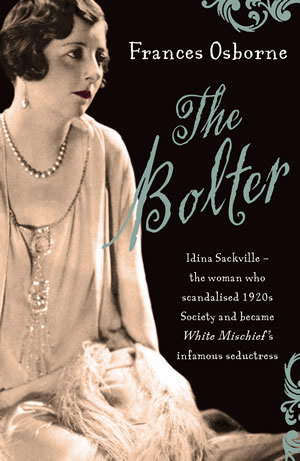
12. The Bolter: The Story of Idina Sackville – Frances Osborne
In Lauren Willig's Acknowledgements at the back of The Ashford Affair, she mentioned that her novel had been inspired by reading The Bolter by Frances Osborne. it sounded so fascinating I ordered it straightaway and it was just as interesting as I had expected. The Bolter is the non-fiction account of the life of Idina Sackville, the author's great-grandmother, who had inspired the key character in Nancy Mitford's Love in a Cold Climate. She married and divorced numerous times, and was part of a very fast set in 1930s Kenya that led to scandal and murder, as explored in James Fox's well-known book White Mischief (which I have also ordered.) Although The Bolter is non-fiction, it reads as compulsively as any novel - I loved it.
PS: I have also read and loved Frances Osborne's earlier non-fiction book, Lilla's Feast - here is a review of it I wrote some years ago for Good Reading magazine.
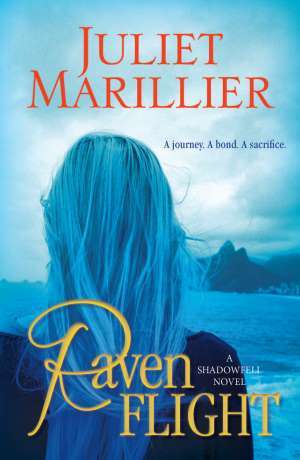
13. Raven Flight – Juliet Marillier
Juliet Marillier is one of my all-time favourite authors and a new book from her is always reason to celebrate. So when Raven Flight appeared in my mailbox, I gave a little jump of joy and read it straightaway. Raven Flight is Book 2 in the Shadowfell series. I loved Shadowfell and it made my List of Best Books 2012 - the books are classic old-fashioned high fantasy with a quest at its heart. The writing is beautiful and limpid, the setting is an otherworldy Scotland, and the story mixes danger, magic and romance - sigh! I loved it. This is YA fantasy at its absolute best.
July 15, 2013
SPOTLIGHT: Rose Scott, Australian suffragette
I'll be talking with Jenny Strachan about feminist themes in THE WILD GIRL at 11am, but will be there for most of the day so I do hope you'll all come along and listen and learn.
:
When: Saturday 20th July, 2013
Where: The Women's Club – 4th Floor, 179 Elizabeth St, Sydney
Time: 8am – 6pm
For more information, go to the Rose Scott Women's Writers Festival website
I'm ashamed to say I had never heard about Rose Scott so I thought I'd take this opportunity to celebrate her life.
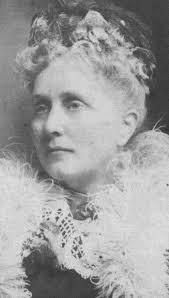
Born in 1847, Rose Scott was an Australian women's rights activist who worked tirelessly for women's suffrage and universal suffrage at the turn-of-the twentieth century.
Don't forget that - in 1902 - Australia was the first country in the world to give women both the right to vote in federal elections and also the right to be elected to parliament on a national basis. Rose Scott and the other suffragettes in Australia were instrumental in this international breakthrough for women's rights. (New Zealand granted women the right to vote in 1893, but did not allow women to be elected to office).
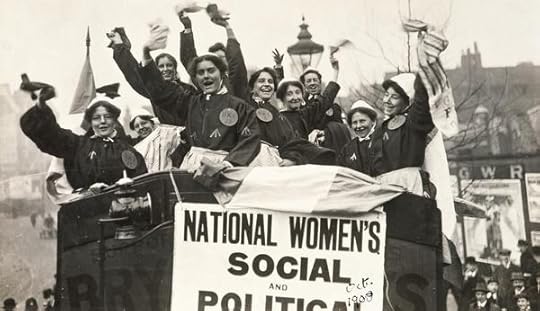
In 1889, Rose Scott helped to found the Women's Literary Society, which later grew into the Womanhood Suffrage League in 1891.
Her interest in votes for women led her to research working conditions for women in the community, and she found that some young girls were working from 8am to 9pm most days. She invited the girls to come and describe their lives to leading politicians of the day, which led to changes in the law.
Other reforms she advocated were the appointment of matrons at police stations and of women inspectors in factories and shops, and improvements in the conditions of women prisoners.
Rose Scott was the First President of the Women's Political Education League, a position she held for 8 years. The League campaigned for the raising of the age of consent to 16, achieved in 1910 with the Crimes (Girls' Protection) Act.
Other post-suffrage feminist reform campaigns she participated in included the Family Maintenance and Guardianship of Infants (1916), Women's Legal Status (1918) and First Offenders (Women) 1918 Acts.

Newspaper cartoons of the time mocked the idea of women holding office
One day I hope to write a book about the suffragettes - its such a fascinating period of history and those women fought for rights that we take so much for granted these days.
July 14, 2013
BOOK REVIEW: Lilla's Feast by Frances Osborne
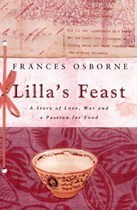
Lilla’s Feast – A True Story of Love, War and a Passion for Food, by Frances Osborne, is well named indeed. This book is indeed a feast for all the senses, telling the compelling life story of the writer’s great-grandmother who was born into a British colonial family in China towards the end of the nineteenth century.
In the hundred years of her life, she survived the Boxer rebellion, the Japanese invasion and the Communist uprising, spending three years in a Japanese internment camp. Fighting terror, starvation and the bitter cold, Lilla consoled herself by writing a cookery book, typing it up on whatever odd bits of paper she could find.
Her book recalls another age, containing recipes for jugged hare, cream puffs, galantine of beef, ox-foot soup, raspberry meringue. All while she and her fellow prisoners were subsisting on cabbage water soup and a tablespoon of rancid donkey meat – if they were lucky. By the end of the war, her book was a complete encyclopedia on how to live life well, which Lilla did for another half a decade.
Lilla’s Feast is a fascinating book, filled with recipes, a wealth of illuminating historical detail, and the charming illustrations Lilla’s brother drew for her in the camp.
This review was originally published in Good Reading magazine.
July 10, 2013
GUEST BLOG: Elisabeth Storrs, author of The Golden Dice
A guest post by Elisabeth Storrs:
[image error]
A big thank you to Kate for inviting me to post about my journey to publication of The Golden Dice, the second volume in the Tales of Ancient Rome series. It’s wonderful to have her support to spread the word about my newly released book.
Almost three years ago, a long held dream of mine came true. The Wedding Shroud, an historical novel I had laboured over for ten years, was published in Australia and New Zealand by Pier 9 Murdoch Books.
[image error]
My journey was not unlike many authors who squeeze time for writing in between the pressures of daily work and family commitments. And like so many others, I experienced countless rejections when I submitted my manuscript to publishers. It was the four ‘P’s of writing that kept me going: passion, persistence, patience and practice. In the end, too, there was a touch of luck. I had an agent who championed my book and persuaded a commissioning editor to publish an historical novel set in an unusual period and place – the early Roman Republic and the little known civilisation of the Etruscans.
So I was published. And the future was rosy as I’d secured a contract to write The Golden Dice. Suddenly I needed to research and write a novel in eighteen months not ten years! However the practice of already completing a book (and having it professionally edited) meant I had a better grasp of how to structure the sequel more efficiently, keep the plot tight, and develop characters. I met the deadline and was anticipating releasing the book in September 2012.
However, over those eighteen months the world of publishing changed dramatically. The Borders retail chain collapsed and the digital revolution erupted. The rules of the game altered. The introduction of inexpensive ereaders and cheap ebooks now threatened the business model of mainstream publishers.
This upheaval impacted on my situation, too. Pier 9 disappeared as did the contract for The Golden Dice. And other publishers weren’t prepared to risk marketing a book set in an obscure period. Luckily, the chance to publish the second book in my series was not lost. Independent publishing had matured into a viable option. And as I had always retained ‘rest of the world’ rights to The Wedding Shroud, I decided to publish this novel first and reach a readership beyond the shores of Australia.
The mechanics of independent publishing are not as easy as people think. An author has to ensure their ‘product’ is professionally edited and produced in a variety of digital formats to ensure the ebook is free of technical errors when uploaded to different retail platforms. Metadata has to be effective, and administrative details need to be dealt with in relation to tax and royalty payments. Luckily there is an abundance of useful blogs, forums and books such as Digireado, Let’s Get Visible, KBoards and Let’s Get Digital that assist can an independent publisher in their endeavours.
“Going indie” provided me with the opportunity to use marketing strategies on Amazon that were denied me when traditionally published. By preparing to offer my book for a bargain price or for free over short periods of time, The Wedding Shroud gained visibility on the popularity lists. Sales and reviews followed. Bizarrely, Amazon is a near monopoly but it is also the most democratic of booksellers. It doesn’t distinguish between books released by the major publishing houses from those published by indies. No longer is it necessary to have big bucks to buy a position at the front of a store as has been the advantage of traditional publishers all these years. Suddenly a book like The Wedding Shroud is able to reach the attention of historical fiction fans internationally.
At the recent Historical Novel Society Conference in Florida, a panel consisting of authors and bloggers Julie K Rose, Heather Domin, Audra Friend and Andrea Connell, discussed trends in publishing in a session entitled “Off the Beaten Path Books”. Their analysis was heartening because it revealed historical fiction authors can reach a readership even if they choose unusual settings and characters or opt to write about eras other than the 19th and 20th centuries where the vast majority of ‘popular’ mainstream books are set (See Sarah Johnson’s Which centuries are the most popular in today’s historicals?) The Off the Beaten list compiled by the panel also doesn’t distinguish between highly successful traditional authors and indies.
In my little cocoon “down under’, I was oblivious that The Wedding Shroud was on the panel’s list of books; or that The Golden Dice was being discussed at an American conference as one of the “anticipated” releases of 2013 until Julie Rose mentioned it to me on Facebook. To my absolute astonishment, word had spread to the other side of the world about my story of a young Roman girl married to an Etruscan foe; two lovers who were blamed for starting a war. The 4 P’s of writing had worked again.
Of course, to those in the northern hemisphere, Australia itself could be seen as “off the beaten path” as much as is the ancient civilization of Etruria. And so I say a big thank you to the members of an enthusiastic and generous global historical fiction community who are prepared to travel into unfamiliar past times while also welcoming an unknown Aussie author into their midst.
[image error]
The Golden Dice:
The Tales of Ancient Rome series chronicles the events of a ten year siege between Rome and the Etruscan city of Veii. The Wedding Shroud ends when war is declared. The Golden Dice, continues the story seven years later at the height of the conflict. In addition to following the Roman treaty bride, Caecilia, two other strong female characters are introduced: Semni, a young Etruscan girl, and Pinna, a Roman tomb whore. I hope readers will enjoy visiting Etruria again, or venture into this world for the first time to learn how three women of the ancient world endure a war. You will find more information on the background to the book at my blog, Triclinium, or you can connect with me at twitter and facebook.
The Wedding Shroud and The Golden Dice are available on Amazon or via other retailers listed on my website.
[image error]
July 4, 2013
INTERVIEW: Lauren Willig author of The Ashford Affair
I met Lauren Willig a few years ago when I attended the Historical Novel Society Conference in Chicago. I snaffled up her first book, THE SECRET HISTORY OF THE PINK CARNATION, because it was described as a romantic romp in the vein of the Scarlet Pimpernel, only funnier. Well, I've always loved the Scarlet Pimpernel (by Baroness Orczy) and I also love funny historical romances, and so it seemed a match made in heaven. And it was! I've adored all of her books since, and read all 11 of them (here's a link to a list of Lauren Willig's utterly divine Pink Carnation books, in reading order)
[image error]
This year, Lauren has released a very different book, THE ASHFORD AFFAIR.
The book moves between two narrative threads, one set in contemporary New York and London, and the other set in 1920s England and Africa. It's a historical mystery, a family drama, a romance, a vivid re-enactment of life in Kenya after the war - its all this and more and I absolutely loved it. You can read my review here.
Here Lauren answers all my usual questions:
[image error]
Are you a daydreamer too?
Perpetually! When I was little, I used to spin stories out of books I’d read or movies I’d seen, weaving myself into the narrative in elaborate ways. (Return of the Jedi came out when I was six, and I worked up a very complicated plot in which I was Princess Leia’s best friend and wound up eventually living happily ever after with Luke Skywalker—in my own defense, I was only in first grade, and therefore didn’t realize that Harrison Ford was the better romantic option.) Walks in the woods behind my parents’ house always involved daydreams about stumbling on castles, a la Evelyn Nesbit novels, or accidentally slipping through a time seam into a battle between Robin Hood and the sheriff’s men. We’ll ignore the fact that this was in New York—as far as I and my imagination were concerned, New York was a semi-detached part of England, and Norman castles in Putnam County made perfect sense.
I have to confess, I haven’t really grown out of it. The nature of the daydreams have changed (no more Luke Skywalker, certainly!), but I still have a habit of drifting off into reverie.
Have you always wanted to be a writer?
When I was six, I made the grand announcement that I was going to be a writer when I grew up. Before that, it had been ballerina or princess (I gravitate towards occupations that involve tiaras), but I can’t keep a beat to save my life and no one had come along with a kingdom, so it seemed prudent to try another course.
I finished my first novel, a mystery titled “The Night the Clock Struck Death” when I was nine, and sent it off—all two hundred handwritten pages!—to a New York publisher, cherishing elaborate daydreams of being hailed as “Youngest Bestseller Ever!” and invited to tea with the Queen (see my delusions of growing up in a semi-detached part of England, above). The publisher sent it back. I was crushed and had a little sob with my Barbie dolls before setting to work on the next novel, a Victoria Holt knock-off called 'The Chateau Secret'. I went on that way for some time, producing large piles of paper, first handwritten, then later on an old dot matrix printer, pouring over Writer’s Digest while my friends were reading Seventeen, and attending the sort of pretentious Young Writers’ camps where the poets spoke in rhyme all the time, until one of those large piles of paper got picked up by an agent when I was twenty-six and became the first book in my Pink Carnation series. All in all, my path to publication took twenty years—but I started early!
Tell me a little about yourself – where were you born, where do you live, what do you like to do?
Like the modern heroine of my book, I grew up in New York City, where I attended one of those all girls’ schools where everyone wears little pinafores and shirts with Peter Pan collars. It was a wonderful place to be in training as a novelist, especially since the lack of real boys meant a lot of time with brooding heroes of the literary variety. I discovered Victoria Holt and Mary Stewart early on and never looked back.
After some time at Yale and Harvard, collecting various degrees, and a stint in London, doing dissertation research, I made my way back to New York, where I juggled a microscopically short career as a lawyer with writing novels about swashbuckling spies during the Napoleonic wars. When it came down to knee breeches versus legal briefs, the knee breeches won hands down. I left my life as a litigator to play with Napoleonic spies and other colorful characters full time. Which was what finally gave me the time to write THE ASHFORD AFFAIR….
How did you get the first flash of inspiration for this book?
THE ASHFORD AFFAIR was one of those story ideas that popped up on me out of the blue. I wasn’t meant to be writing about 1920s Kenya; I was meant to be writing another novel set during the Napoleonic Wars. But, in the fall of 2010, a friend gave me a copy of THE BOLTER, about the life of Idina Sackville Gordon Wallace, etc, who racketed from England to Kenya, acquiring and discarding husbands along the way. It wasn’t just the rackety life of British expats in Kenya that fascinated me; I was deeply intrigued by the author’s comment, in the preface, that she hadn’t known that the Bolter (aka Idina Sackville) was her great-grandmother until she was in her teens. The family had kept the relationship under wraps.
At the time, my own grandmother was very ill, and it struck me, forcibly, how much we assume and how little we know of our own family members and their pasts. What if a modern woman, wrapped up in her own career worries, were to discover that nothing about her family was as it seemed?
Once the idea hit, it wouldn’t go away. I put the next book in my Pink Carnation series on hold, read up on Edwardian England, World War I, and 1920s Kenya, and launched into the story that would eventually become THE ASHFORD AFFAIR.
[image error]
How extensively do you plan your novels?
Plan? What is this plan of which you speak? I wish I could be a more organized author, but I’ve found that the more I outline in advance, the more I run myself into dead ends. I’m a very character-driven writer, so I’ve learned that I’m best off following my characters and letting them drive the plot. When I try to plan too far ahead, I wind up trying to herd my characters in directions they don’t necessarily want to go, which leads to frustration, writer’s block, and lots of eating peanut butter straight out of the jar.
Do you ever use dreams as a source of inspiration?
I generally don’t remember my dreams—isn’t that disappointing? But I’ve found that dreams often make excellent plot devices, especially with characters who are very guarded in their waking lives. Exploring their unconscious thoughts gives me—and the reader—a chance to get to know them better.
While I’ve never been able to mine my dreams for ideas, I’ve found that most of my biggest plot breakthroughs have come while I’ve been in the middle of mundane tasks, like showering or walking to the grocery store. Which is why there will so often be a trail of shampoo suds from the shower to my computer as I rush to get the idea down before I lose it again.
Did you make any astonishing serendipitous discoveries while writing this book?
Where to start? As a lapsed historian, one of the things I love about writing historical fiction is getting to explore all the little quirks and anomalies in the historical record, all those places where truth really is stranger than fiction. (As one of my favorite examples of this, when I was working on my dissertation back in the day, one of the events with which I was dealing was an episode where one of Charles I’s attempts to escape from Parliamentary imprisonment was foiled because the King’s shoulders got stuck in the window. And by stuck, I mean wedged. Legs sticking out one end, head out the other, unable to move wedged. You really can’t make this stuff up.)
Kenya in the 1920s certainly wasn’t lacking for quirkiness! You had old Etonians alternating between boozy parties and experimental farming, female aviators, giraffes wandering into telegraph wires, and a post-War generation dealing with a world in flux. It’s that mix of hedonism and desperation, self-indulgence and fear, that makes that world and that crowd so particularly interesting. Well, that and all the gin.
Where do you write, and when?
It’s such a cliché by now, but I tend to write in Starbucks, away from the ringing of my phone, the siren song of the peanut butter jar in my fridge, and the lure of email (as far as I’m concerned, Starbucks has no internet access, and I don’t want to be told otherwise). I’ve had a different signature drink for each novel. For THE ASHFORD AFFAIR, it was a grande skim caramel mocha—with whipped cream. I needed the extra sugar to get me over the rough bits!
What is your favourite part of writing?
Those days when the characters do entirely unexpected things that you know are just RIGHT—or they come out with a bit of dialogue you couldn’t imagine coming out of your own mouth, something that completely and utterly belonging to that character. Those are the golden moments that keep me going through the rest of it.
What do you do when you get blocked?
Pace and mutter and scribble notes to myself longhand on sheets of blank paper. Then I bribe myself with treats and large amounts of caffeine. I know it’s bad when I’ve sunk to the eating cereal out of the box stage, munching and muttering to myself. Once it’s reached that level, I call either my little sister or my college roommate, both of whom are geniuses at unknotting plot tangles and helping me figure out where I went wrong. Sometimes blocks are nothing to do with the book itself—they’re to do with my mood or things going on in my real life outside my head or just pure laziness—but other times it’s a signal to me that the book has taken a wrong turn somewhere and I need to diagnose what the problem is so that I can get it back on track.
How do you keep your well of inspiration full?
I read, constantly. I can’t imagine not reading. Usually, I read three to four novels a week, sometimes beloved re-reads, other times new books. When I got really stuck, I used to go browse through the new books tables at the bookstore and come home with a fresh haul—but, sadly, both the bookstores within easy walking distance of me have now closed, so, these days, I rely a great deal on my readers for book recommendations. I have a feature on my website on Fridays called Weekly Reading Round-Up, in which I list what I’ve been reading and everyone chimes in with their reads. I’ve founds some great new authors that way.
(Here's the link to Lauren's website and her Weekly Reading Round-up - this is such a great idea I might have to steal it. Weirdly, we've both been reading Susannah Kearsley's novel 'The Firebird' at around the same time ....
Do you have any rituals that help you to write?
Aside from large amounts of caffeine?
Who are ten of your favourite writers?
Only ten? That’s always hard…. Okay, off the top of my head: L.M. Montgomery, Mary Stewart, Dorothy Sayers, Elizabeth Peters/Barbara Michaels, Nancy Mitford, Diana Gabaldon, Susanna Kearsley, Judith Merkle Riley, Georgette Heyer, and Robin McKinley. Although that still leaves out so many on my keeper shelf….
(oooh, we share lots of favourite writers too!)
[image error]
What do you consider to be good writing?
It’s like that famous line about pornography: I know it when I see it. Good writing, truly good writing, is a harmonious combination of craft and storytelling. There’s a cadence and rhythm to good writing, a comfort with language that draws the reader along. Clunky writing sits harshly on my ear and makes me wince. But if the characters seem flat or the pacing lags, the prose can be beautiful as beautiful can be and still not redeem it. When those two work in concert—smooth writing and a compelling story—the result is magical. You forget that you’re reading at all and just barrel along with the story, off in another world.
What is your advice for someone dreaming of being a writer too?
Read, read, and read some more! Read broadly, in a variety of genres and styles. Nothing trains the ear to the rhythms and subtleties of language in quite the same way as devouring large quantities of poetry and prose, not to mention the instinctive sense of plot and pacing that comes of having immersed yourself in other peoples’ stories.
Then sit down at your computer, turn off that nasty editor in your head, take a slug of strong coffee (optional), and just keep hammering away at it, even on those days when language feels like lead and all the characters in your head have gone off on vacation together.
What are you working on now?
I’ve just finished writing a second time slip novel: this one goes back and forth between a house in the suburbs of London in 2009 and the same place in 1849, during the early days of the Pre-Raphaelite movement. My modern heroine, who has lost her job in the financial crisis and is feeling a bit lost and at loose ends, inherits her great-aunt’s house in Herne Hill, a house she hasn’t seen since she was six and her father abruptly moved her to New York. While she’s clearing it out, she stumbles upon a Pre-Raphaelite painting, tied up in yellowed paper, hidden in the back of an old wardrobe. Who painted it and how did it come to be there? Her quest for the painting’s provenance leads her deep into her family’s past and a secret buried for over a century….
I don’t have a title or an exact release date yet, but the Pre-Raphalite book should be coming out in spring of 2014.
(I don't know if I should say this, but I've been working on an idea that is spookily similar to this one! Maybe Lauren and I are twins separated at birth ...)
In the meantime, I’m also gearing up for the publication of the latest book in my Pink Carnation series, THE PASSION OF THE PURPLE PLUMERIA, set in Bath in 1805, and filled with swashbuckling Englishwomen, French spies, and, of course, my heroine’s trusty sword parasol.
THE PASSION OF THE PURPLE PLUMERIA comes out on August 6th.
For more about THE ASHFORD AFFAIR, the upcoming Pre-Raphaelite book, or any of the Pink Carnation novels, come visit me on my website, www.laurenwillig.com, or on Facebook at http://www.facebook.com/LaurenWillig.
July 2, 2013
BOOK LIST: Lauren Willig lists her favourite family dramas
Lauren has kindly put together a list of her own favourite family dramas for me.
[image error]
As a child of the 80s, I grew up on big, sweeping, family sagas.
Does anyone else remember those? They were inevitably doorstop sized and often had two or three equally large sequels. The gem among family sagas was Barbara Taylor Bradford’s A Woman of Substance—and then the sequels, Hold the Dream and To Be the Best — which I read and re-read until the binding broke and pages fell out. But it wasn’t just Barbara Taylor Bradford. The shelves were full of tangled tales of ambition, success and familial bickering: Judith Krantz, Elizabeth Adler, Jeffrey Archer, Celeste de Blasis.
One of the things I loved about these books was the “how they got there” aspect. Often, they would start in the present day (albeit a present day of bright blue eye-shadow and extra-wide shoulder pads) with a formidable matriarch, or multiple formidable matriarchs, and then skip back and forth in time, showing the formidable matriarch’s not so formidable days and how she gradually got to be where she was. There was something incredibly energizing about that progress, about watching someone conquer her fears, and, often by trial and error, with missteps along the way, stumble into success.
Of course, the stumbling wouldn’t be apparent to the other characters in the present day. That was part of the lure of these novels, the feeling that you were getting the inside scoop on what had really happened, all the details to which the heroine’s children and grandchildren weren’t privy or didn’t appreciate. We also got an inside view of the price of success: the insecurities, the double-crosses, the plotting among family members who didn’t realize just how far the family had come.
That was only one brand of the family saga. There were the more straightforward ones, too, the ones that didn’t go back in time but started at the beginning and then kept on moving forward—but, now that I think about it, the draw was the same. It was the thrill of watching a family’s story develop over time, getting to see how each generation impacts the next.
Without realizing it, it was that sort of book I set out to recreate when I sat down to write THE ASHFORD AFFAIR: a family saga where the events of the past affect everyone for generations thereafter—and we, as readers, get the inside scoop.
[image error]
These were some of my family saga favorites as a pre-teen back in the 80s:
Barbara Taylor Bradford’s A Woman of Substance, in which an Edwardian scullery maid rises to become an international magnate with a department store and textile empire;
Colleen McCullough’s The Thorn Birds, chronicling multiple generations of an Australian family, centering around the doomed love of the daughter of the family for a Roman Catholic priest (played by Richard Chamberlain in the mini-series—oh, the memories);
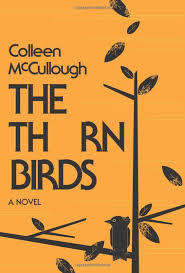
Judith Krantz’s Princess Daisy, ranging from Imperial Russia to modern America;
R. Delderfield’s God is an Englishman, about the rise of a family’s fortunes in the industrializing England of the mid-nineteenth century;
Elizabeth Adler’s The Property of a Lady, which follows a tangled web of intrigue and missing jewels from Imperial Russia to New York.
What were your favorite family sagas?
Lauren's website
June 30, 2013
BOOK REVIEW: The Ashford Affair by Lauren Willig
[image error]
Title: THE ASHFORD AFFAIR
Author: Lauren Willig
Publisher: St Martin’s Press
Age Group & Genre: Contemporary/Historical Mystery/Family Drama
The Blurb:
New York Times bestselling author Lauren Willig "spins a web of lust, power and loss" (Kate Alcott) that is by turns epic and intimate, transporting and page-turning.
As a lawyer in a large Manhattan firm, just shy of making partner, Clementine Evans has finally achieved almost everything she’s been working towards—but now she’s not sure it’s enough. Her long hours have led to a broken engagement and, suddenly single at thirty-four, she feels her messy life crumbling around her. But when the family gathers for her grandmother Addie’s ninety-ninth birthday, a relative lets slip hints about a long-buried family secret, leading Clemmie on a journey into the past that could change everything. . . .
What follows is a potent story that spans generations and continents, bringing an Out of Africa feel to a Downton Abbey cast of unforgettable characters. From the inner circles of WWI-era British society to the skyscrapers of Manhattan and the red-dirt hills of Kenya, the never-told secrets of a woman and a family unfurl.(less)
What I Thought:
I was very intrigued (and pleased) to hear about this new novel by Lauren Willig – I adore her swashbuckling, bodice-ripping, laugh-out-loud historical/contemporary romances – but I know all too well how a successful series can become a straitjacket for an author and I’m always wanting authors I love to be bold and take a few risks, and try something new and different.
So I came to this new book by Lauren Willig genuinely excited and curious and wanting her to succeed. And I’m very glad to say she has succeeded brilliantly.
I’ve always loved books that move back and forth between a contemporary setting and an historical one. I have always loved books that combine mystery, romance, drama and a vivid sense of place and time. THE ASHFORD AFFAIR has everything I love in a book, and it’s all put together in what seems like a simple and effortless way … until you try to do it yourself.
We begin with the story of Clementine Evans, a driven 34-year-old lawyer who is beginning to wonder if she has sacrificed too much for her career. She is running late – again! – to a family function celebrating her beloved grandmother Adeline’s 99th birthday. She is shocked and saddened to find her grandmother is frail and begin to wander in her wits … and calling her by another name.
Then the narrative goes back in time to Adeline’s childhood. Her parents have been killed, and she is sent as a charity child to live with the uncle she has never met, who lives with his family at the grand manor house, Ashford Park. Her Bea is her only friend, even though she has a habit of getting Adeline into trouble.
The two girls grow up together - one falls in love and the other marries. It is the ‘20s, and the giddy gaiety of the times does not suit serious, bookish Adeline. The young women grow apart, and, in their own way, hurt each other badly.
Meanwhile, Clementine realises that her family hides a secret … a story of love, betrayal, and possible murder.
The two stories touch and part, touch and part, in an intricate yet graceful dance, each new revelation helping the suspense to build. I was genuinely surprised at a couple of plot points and genuinely uttered a deep aaaah! at the end.
Loved it!
Lauren Willig's website
[image error] [image error] [image error] [image error]



